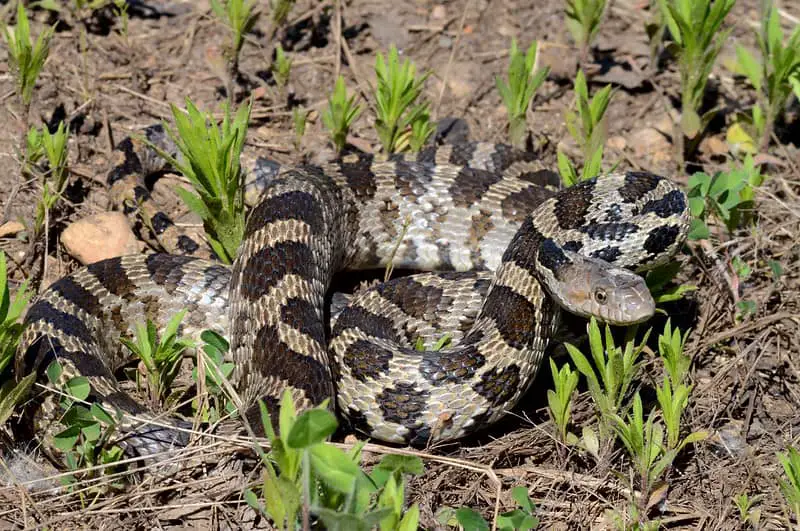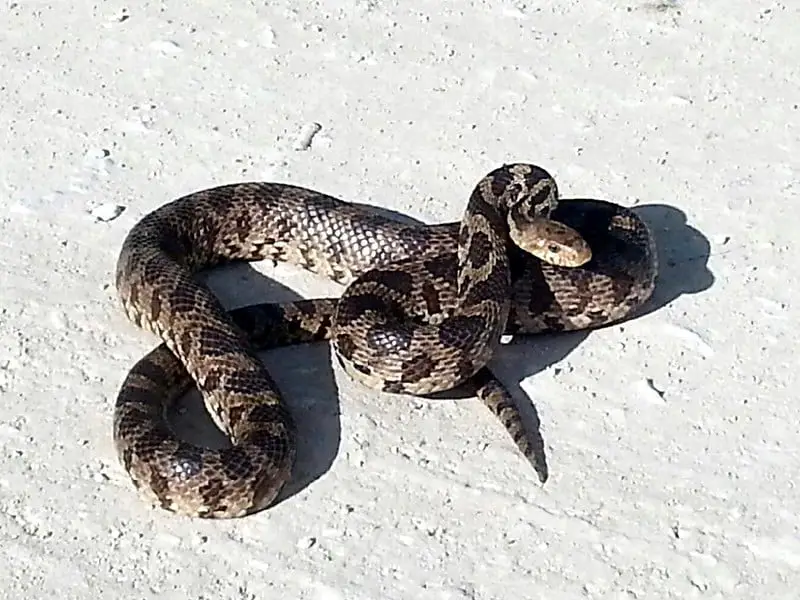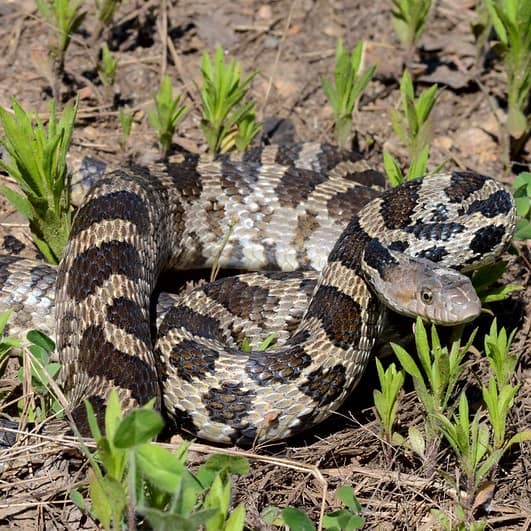Pantherophis ramspotti, the western fox snake is a nonvenomous snake species found in the Central United States, west of the Mississippi River. The snake is usually light-brown or yellowish with dark brown or black blotches. This species was proposed only in 2011. Before that, it was considerd part of the closely related eastern foxsnake (Pantherophis vulpinus).
Western Fox Snake Description
The base color of western fox snakes is mostly light brown, sometimes yellow or even reddish. The back of adults has numerous light brown and black blotches, on average 41. The color of the head can vary from brown to reddish and yellow. Specimen with a reddish head are often mistaken for the venomous copperhead snake and therefore killed. The belly of the snake is yellow or cream-colored with black squares. The scales are slightly keeled.

The appearance of adult snakes differs greatly from juveniles. At a young age, the black spots on the skin are usually dark brown with black or really dark brown edges. Juveniles also have a dark line from the jaws to the eyes and between the eyes. This line disappears as the snake ages.
Other similar-looking snakes that the western fox snake can be confused with: The nonvemomous Pacific gopher snake (especially the subspecies bullsnake), the nonvenomous western hognose snake, venomous rattlesnakes and the venomous cottonmouth snake or copperhead snake. In Iowa, several crossbreeds between western fox snakes and bullsnakes have been found, making a definitive ID even more difficult.
Size
Like all species from the rat snake family, fox snakes are a relatively long snake species in the United States. An adult western fox snake grows between 36-56 inches (93-143 cm).
Diet an Habitat
The western fox snake inhabits a variety of habitats, mostly moist environments close to rivers and lakes. They feed mostly on small mammals and birds or birds’ eggs. The snake is an excellent climber. The fox snake kills its prey by constriction. It wraps its body around the prey and contracts its muscles. Through this, the prey is either crushed to death or suffocated before it is eaten whole. They are often found near farms where they prey on rodents.

Bite
When it feels scared, threatened or irritated, the western fox snake often shakes its tail like a rattle. Because of this behavior and its appearance, foxsnakes are often confused with similar-looking rattlesnakes. However, foxsnakes are not venomous and harmless for humans or larger pets. They only bite if provoked.
If the snake feels cornered or is handled, it can release a foul smelling musk that smells similar to foxes. This defensive behavior and its smell has given the snake its common name, the foxsnake.
Geographic Range
The western foxsnake is found in the Northern Central United States, exclusively west of the Mississippi River. Therefore, it can be found in the following States: Minnesota, Iowa, Eastern South Dakota, Eastern Nebraska, Northeastern Kansas and Missouri.
Scientific Classification of Pantherophis ramspotti
- Kingdom: Animalia
- Phylum: Chordata
- Class: Reptilia
- Order: Squamata
- Suborder: Serpentes
- Family: Colubridae
- Genus: Pantherophis
- Species: Pantherophis ramspotti
The species Pantherophis ramspotti was first specified in 2011. Before that, the population of the western foxsnake was considerd part of Pantherophis vulpinus.
